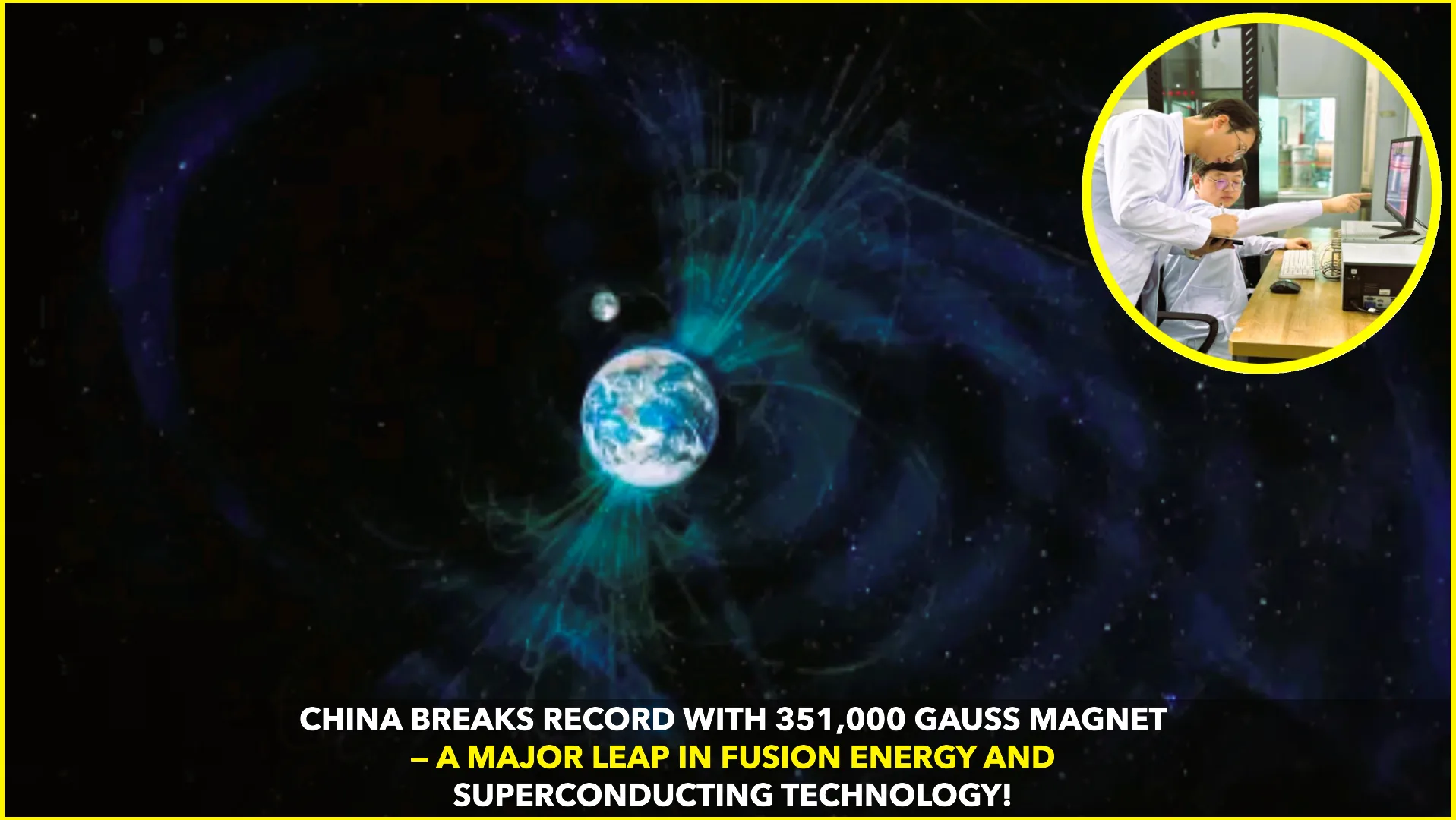In a groundbreaking scientific achievement, Chinese researchers have created the world’s strongest steady magnetic field, reaching an astonishing 351,000 gauss—over 700,000 times stronger than Earth’s natural magnetic field. The development marks a major milestone in superconducting technology and paves the way for next-generation fusion energy systems.
The project was led by the Institute of Plasma Physics under the Chinese Academy of Sciences (ASIPP), in collaboration with several research partners. Their newly developed fully superconducting magnet not only broke the previous record of 323,500 gauss set in 2022 but also demonstrated remarkable stability during testing.
A Superconducting Marvel
Unlike conventional magnets, this record-breaking device uses both high-temperature and low-temperature superconducting coils to generate its immense magnetic strength. Superconductors, when cooled to ultra-low temperatures, allow electrical current to flow without resistance, making them ideal for producing intense magnetic fields efficiently.
During laboratory trials, the magnet maintained a stable field for 30 minutes, proving its reliability under continuous operation. This level of performance is essential for future applications, especially in nuclear fusion experiments where sustained magnetic fields are crucial for plasma confinement.
Researchers at ASIPP explained that the design overcomes previous engineering challenges related to magnetic stress, cooling, and energy stability. “Achieving such high intensity with full superconductivity is a historic step forward,” said project lead Dr. Wan Baonian.
Gateway to Fusion Power
The breakthrough holds tremendous promise for fusion energy, the same process that powers the Sun. Fusion reactors rely on powerful magnetic fields to contain and control plasma at temperatures exceeding millions of degrees Celsius.
China’s success could significantly accelerate progress in fusion research projects such as the International Thermonuclear Experimental Reactor (ITER), the world’s largest collaborative fusion project based in France. ASIPP is already a major contributor to ITER, providing advanced superconducting components for its magnet systems.
Experts believe the 351,000-gauss magnet could serve as a key prototype for future tokamak reactors and stellarators, potentially bringing the world closer to achieving clean, limitless energy.
Beyond Energy: New Frontiers
The implications of this achievement extend far beyond fusion power. Super-strong magnetic fields are crucial in a wide range of cutting-edge technologies, including:
- Magnetic levitation systems: for ultra-fast trains and frictionless transport.
- Advanced medical imaging: enabling higher-resolution MRI scans.
- Space propulsion systems: using magnetic fields to drive plasma thrusters for long-distance space travel.
- Efficient power transmission: minimizing energy loss in superconducting grids.
Each of these sectors could see significant innovation as China continues to push the boundaries of superconducting magnet technology.
Strengthening China’s Scientific Leadership
This milestone further cements China’s position as a leader in global scientific innovation, particularly in superconducting research and fusion energy development. The achievement demonstrates not only technical mastery but also long-term investment in high-impact scientific infrastructure.
By achieving a stable 351,000 gauss magnetic field, China joins the ranks of elite scientific institutions worldwide that are reshaping the future of energy and technology. The ASIPP team is already planning next steps, including scaling up the magnet for practical integration into large fusion devices.
As Dr. Wan summarized, “This isn’t just a record—it’s a foundation for humanity’s next energy revolution.”
Source:
Institute of Plasma Physics, Chinese Academy of Sciences (ASIPP) – Official Press Release, 2025










